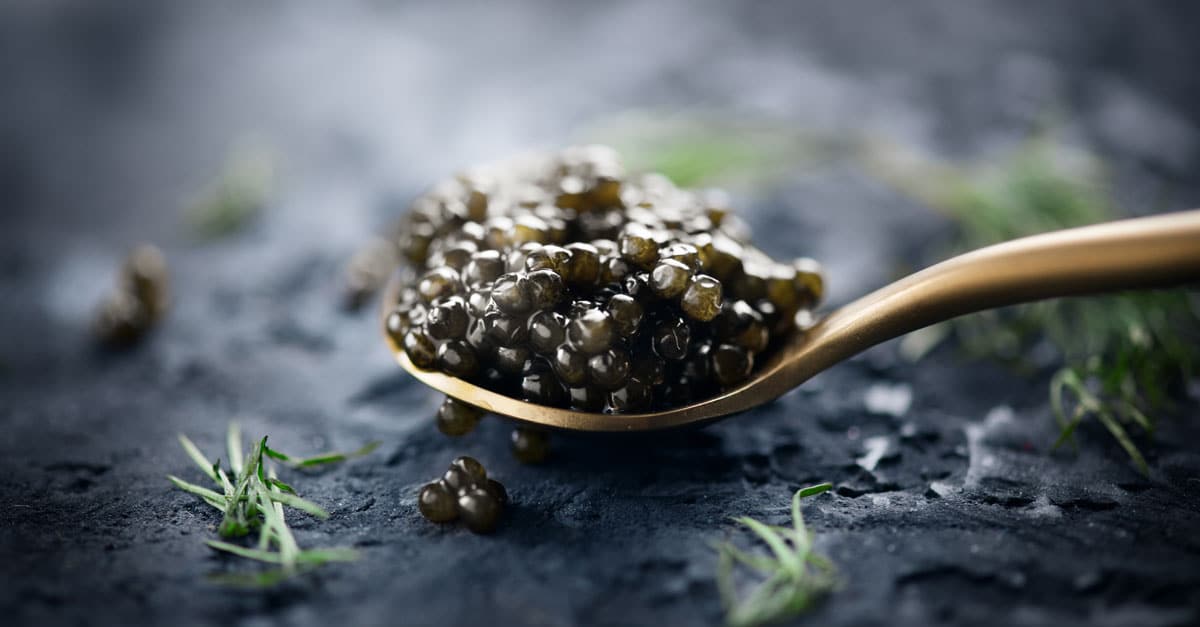The Origins of Caviar: A Journey Through Time
Known for its exquisite taste and texture, caviar has a rich history dating back centuries. While many believe that caviar originated in Russia, it was actually the Persians who first began curing the roe of sturgeon, a species of fish that has been swimming in our oceans for over 250 million years. It wasn’t until the 12th century that Russians began fishing for sturgeon, primarily for its meat rather than its caviar. Over time, as sturgeon became more popular, the demand for caviar grew, leading to its association with luxury and opulence.
The Global Caviar Industry: From Russia to China and Beyond
Once dominated by Russia’s Black Sea and Iran’s Caspian Sea, the caviar industry has expanded globally. China has become the largest producer of caviar by volume, followed by Italy and France. With the development of high-quality farmed caviar, the industry has been able to meet the demand for this luxurious delicacy while reducing pressure on wild sturgeon populations. Today, caviar lovers can enjoy a variety of flavors and textures from different regions of the world.
Exploring the Flavors of Caviar: From Sweet and Nutty to Rich and Intense
Caviar is revered for its distinctive flavor, which can range from sweet and nutty to rich and intense. Each type of caviar offers a unique sensory experience, influenced by factors such as the species of fish, the age of the fish, and the environment in which it was raised.
Siberian caviar, revered for its sweet and nutty flavor, offers a burst of salt that quickly transitions into a buttery and creamy sensation. Russian Oscietra, considered the second best caviar in the world, offers a slightly more intense experience with its aged pearls. Beluga caviar, the most famous and expensive variety, is characterized by its large pearls and delicate flavor. Almas caviar, also known as 24-karat gold caviar, is extremely rare and commands a staggering price due to its unique production process.
Elevate Your Wealth Game: Empowering UHNWIs for Simplified Asset Management. Altoo Platform Preview
Almas caviar comes exclusively from albino beluga sturgeon that are over 100 years old. While many sturgeon live to be over 100 years old, albino beluga sturgeon are quite rare and are found mostly on the Iranian side of the Caspian Sea. With all these requirements, it’s no wonder people pay so much – sometimes over $35,000 per kilo.
The Art of Eating Caviar: A Truly Exquisite Experience
To fully appreciate the flavors and textures of caviar, there are certain etiquettes and techniques to follow. Traditionally, caviar is enjoyed on its own, allowing its delicate flavor to shine. It is recommended to cleanse the palate with a small shot of vodka before indulging in caviar. Using a mother-of-pearl spoon, scoop the cured roe onto the top of your hand, between your thumb and forefinger. Wait for the caviar to reach room temperature before enjoying its exquisite flavors. Another popular way to enjoy caviar is with blinis, creme fraiche and a glass of champagne, creating a harmonious symphony of flavors.
Selecting and Storing Caviar: Ensuring Quality and Freshness
When purchasing caviar, it is important to buy from a trusted retailer who can provide information about the country of origin and the species of fish. Look for certified sea-to-table caviar to ensure its authenticity and quality. To preserve the freshness and flavor of caviar, store unopened tins or jars in a refrigerator set between 28°F and 32°F. If your refrigerator cannot maintain such low temperatures, place the tin in an ice bag in a drawer. Once opened, consume the caviar within 48 hours for optimal taste.
Caviar: Beyond the Palate
Caviar’s appeal extends beyond its exceptional taste and culinary uses. In ancient Persia, caviar was consumed for its medicinal properties, believed to strengthen the immune system. With its high fat and lipid content, sturgeon caviar is a rich source of essential nutrients, including vitamins, minerals, omegas, magnesium, zinc and amino acids. These elements contribute to neural protection, heart health, and improved circulation. Caviar also has cosmetic benefits, with proven skincare advantages pioneered by luxury brands such as La Prairie.









